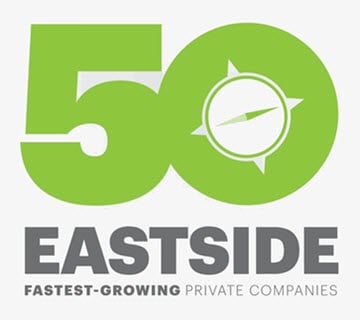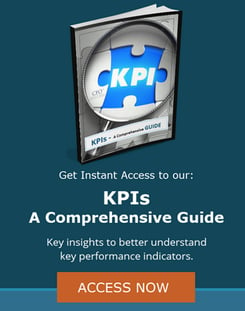 In 2018 we published an article titled “How a CFO Will prepare Your Business for Unexpected Events.” In it we outlined 19 types of unanticipated events that could negatively affect your business and provided advice on how to develop a contingency strategy that would help your company prepare for any kind of disaster or disruption it might encounter.
In 2018 we published an article titled “How a CFO Will prepare Your Business for Unexpected Events.” In it we outlined 19 types of unanticipated events that could negatively affect your business and provided advice on how to develop a contingency strategy that would help your company prepare for any kind of disaster or disruption it might encounter.
Do you know what was not included in that list? A pandemic.
This was not simply an oversight. It was an indication that a global health issue was not on anyone’s radar. It was unthinkable in 2018 that one highly contagious illness could sweep through country after country, shutting down economies and causing destruction. No one was preparing for a global pandemic.
And yet, another interesting observation stands out to us. While the word “pandemic” was never used to address that specific kind of business disruption, the many outcomes of the pandemic were addressed. Loss of a business owner, financial hardship, loss of customers, new government regulations, political unrest, supply chain disruptions, loss of salespeople, and transportation issues were all named as possible unexpected events that could have a significant impact on a company.
However, what this article failed to address was a colossal storm in which worst-case scenario after worst-case scenario was thrown at businesses with little or no warning, allowing them to pile up into sky-high hurdles. There were financial, strategic, logistic, policy, health, and culture issues that arose as the wide-reaching effects of the pandemic spanned the gamut of business arenas. The COVID-19 pandemic rolled all these business challenges into one super obstacle that threatened the future of the businesses themselves and the livelihoods of their owners.
Now that we have lived through the pandemic and can see the light emerging at the other end of the tunnel, we can use our lived experiences to be smarter about contingency planning. The goal now is to develop a sophisticated approach that aims to address how the company will move forward in the event of a multi-pronged business disruption.
Find out how to use this approach to master emergency contingency planning for the new era.
The Backbone of Contingency Planning
The foundation of business contingency planning is identifying critical business processes and functions that will need protecting in the case of an unexpected event. Once these key business-drivers have been identified, it is time to determine how they will be affected by various disruptions and disaster scenarios. At this point, contingency plans can be developed for each type of event using “IF this THEN that” logic.
Since it is impossible to plan for every type of unexpected event, companies typically rank threats in order of likelihood and develop contingency plans for the scenarios at the top of the list. Remember, the more detailed the plans are, the more effective they will be, but the more often they will need to be updated to keep them relevant as well. Regardless of the level of specificity contingency plans will always need to be reevaluated and reworked over time as personnel changes, new technologies are adopted, and processes change.
Strictly speaking, this has always been the backbone of business contingency planning. However, in the post-pandemic era these steps must take on a different look.
A New Framework
The new framework of contingency planning utilizes those same basic steps, but the details involved in each differ substantially.
With the new approach, contingency planning aims to protect essential business processes and also essential personnel. When the pandemic hit, lines were drawn to divide “essential” and “nonessential” staff. While “essential workers” was a term used to identify the medical staff, law enforcement, and food service personnel required to keep people alive, it opened a lot of business owners’ eyes to the fact that some people are unequivocally required to keep things running and moving forward. As a result, business contingency plans now also focus on preserving staff in the most crucial areas of the business instead of just the business itself.
Once key people and processes are identified, then you can begin to predict how they will be affected by a disruption to the business or a disaster. But, instead of creating plans for responding to the most likely scenarios, modern contingency planning focuses on the most damaging scenarios. So, while something like the loss of a key client account may be more likely than something like a major product failure, the latter is likely going to be more harmful to the business. Therefore, many companies these days are choosing to rank threats in order of possible revenue impact and focusing on those with the greatest potential for damage to ensure the future viability of the company.
Additionally, the pandemic has taught us is that the biggest threats are not singular disruptions, but rather multi-pronged challenges. So, instead of creating simple “IF this THEN that” response plans, contingency planning for the new era uses more complex logic like “IF this AND this AND this THEN that” or “IF this AND this THEN that AND that” to develop comprehensive responses to threats with wide-reaching effects.
Of course, with Americans retiring in record numbers, one of the possible responses outlined in a modern business contingency plan may be the owner’s retirement and subsequent sale of the business. Do not forget to include exit strategy planning as you draft formal business responses to possible threats where it makes sense to do so.
Effective business contingency planning relies on strong executive leadership to anticipate possible threats, prepare a response, and execute in the face of adversity. An experienced CFO plays an integral role in this equation. For small and mid-sized companies that do not have the budget for a dedicated, in-house position, a fractional CFO can provide the guidance needed on a part-time or short-term basis to develop and deploy financial responses to changing market conditions and unanticipated disruptions. Contact us today to find out more about how our experienced CFOs can assist your organization with strategic contingency planning.





